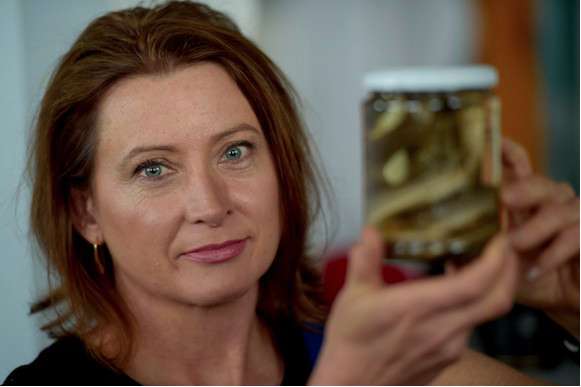Bee alert but not alarmed: humble bee among Australia’s most lethal creatures

An Australian-first national analysis of 13 years’ data on bites and stings from venomous creatures reveals Australia’s towns and cities are a hot-spot for encounters.
The stereotype-busting research also shows that of all Australia’s venomous creatures it is bees and other insects – not snakes, spiders, or jellyfish – that pose the biggest public health threat.
Including fatalities, venomous stings and bites resulted in almost 42 000 hospitalisations over the study period.
Bees and wasps were responsible for just over one third (33 per cent) of hospital admissions, followed by spider bites (30 per cent) and snake bites (15 per cent).
Overall, 64 people were killed by a venomous sting or bite, with more than half of these deaths (34) due to an allergic reaction to an insect bite that caused anaphylactic shock.
Snake bites caused 27 deaths. Importantly, snake bite envenoming caused nearly twice as many deaths per hospital admission than other venomous creatures, making snake bite one of the most important venomous injuries to address.
Bees and wasps killed 27 people, only one case of a beekeeper and one case of a snake catcher recorded. Tick bites caused three deaths, ant bites another two and box jellyfish killed three people. There were two unknown insects. No spider bite fatalities were registered.
University of Melbourne Australian Venom Unit public health expert at the Ronelle Welton led the study, which has been published in the Internal Medicine Journal.
She said she was surprised to find so many deaths and hospitalisations up and down the populated coastal areas of Australia.
“More than half of deaths happened at home, and almost two-thirds (64%) occurred, not in the isolated areas we might expect, but rather, in major cities and inner-regional areas where healthcare is readily accessible,” Dr Welton said.
Researchers believe one of the reasons anaphylaxis from insect bites and stings has proven deadly may be because people are complacent in seeking medical attention and anaphylaxis can kill quickly.
While three-quarters of snakebite fatalities at least made it to hospital, only 44 per cent of people who died from an allergic reaction to an insect sting got to hospital.
“Perhaps it’s because bees are so innocuous that most people don’t really fear them in the same way they fear snakes,” Dr Welton said.
“Without having a previous history of allergy, you might get bitten and although nothing happens the first time, you’ve still developed an allergic sensitivity.”
Western Australia and South Australia were hot spots for stings and bites and there were no deaths recorded in Tasmania over the decade. Bites and stings were much more likely to occur between April to October.
Dr Welton believes the current national guidelines for prevention and treatment of envenoming is inadequate because we actually know very little about the health burden of venomous creatures.
“From a public health perspective, we can’t make informed decisions until we have a much clearer picture about what’s going on,” she said.
“For example, in South Australia, there are a lot more stings and anaphylaxis from bees. In Queensland there are more snake bites. In Tasmania, their biggest issue is jumper ant anaphylaxis. So the clinical management needs to vary for each state and territory.”